Good Enough Isn't Good Enough
We in the Midwest Need to Do Better
In the third grade, I decided to take up the violin. I had seen some people performing on tv, and thought, “I want to be able to do THAT.” Who knows why we gravitate to things we do, but there it is. I was hooked in short order. That moment began a lifelong journey and love affair with music. I played all through high school, college, and after college in civic groups. At one point, in my mid-life crisis years, I even played in a rock band with some friends.
One thing, among many, I picked up from years of involvement with classical music was discerning orchestras that were just ok versus ones that were really good or even exceptional. I was never a great musician, but I sure knew how to see and appreciate people who truly were outstanding.
Around 2005, Michael Stern was hired to be the conductor for the Kansas City Symphony. The Symphony to that point had a checkered history, both musically and financially. Truth is, the orchestra really wasn’t all that great. Like a lot of mid-sized cities, we had an orchestra, but it neither connected well with the public nor garnered any kind of musical acclaim.
Stern sought to change all that. Son of the famous violinist, Isaac Stern, the new conductor made a splash with a dynamic personality that connected with people, and an admonition that “good enough isn’t good enough.” He was going to push to raise the bar musically. And Stern has really nailed it, in my opinion. The Symphony has never been more visible and successful, and the quality of music has improved noticeably. In their new home at the Kauffman Center, the Symphony has elevated its civic stature to a place it probably hasn’t been in many decades. Kansas City is a much better place to live because of Stern, and his efforts.
Frozen Music
The way Stern felt about the Symphony in 2005 is how I have felt for years about the built environment we produce. That’s especially true in the Midwest, which is where I have lived most of my life. Every so often we see developers and architects who produce a good building. Sometimes we see a portion of a street that looks really good. But by and large, almost nothing we have produced for decades rises to the level of average buildings from say, 1910.
During my time in Savannah, Georgia, I noticed how much better the new buildings were than virtually anything in the middle of the country. It’s true that the Landmark Historic District has especially tough design regulations, but my observation for new construction happened in many areas well outside that District, too. Somehow, the culture there still placed importance on design and quality. People actually talk about design. They argue about it the way some of us argue about our sports teams. It’s an issue of civic importance. There are newer buildings in Savannah that are mediocre by local standards, but would be the best new construction in nearly any other city in the country.

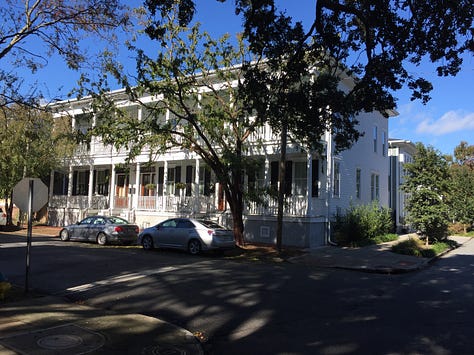
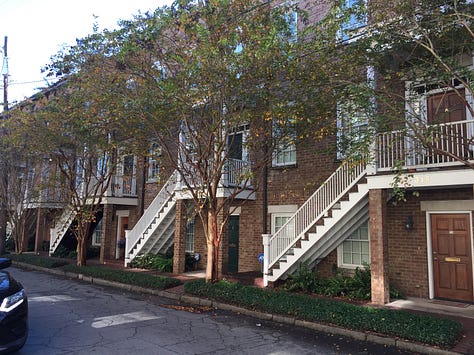
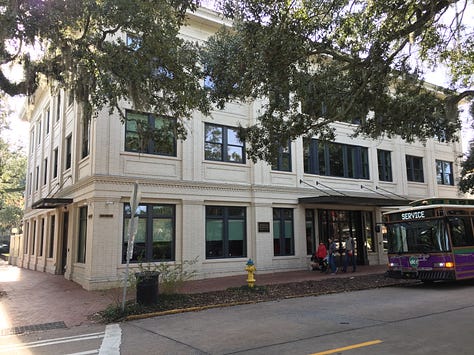
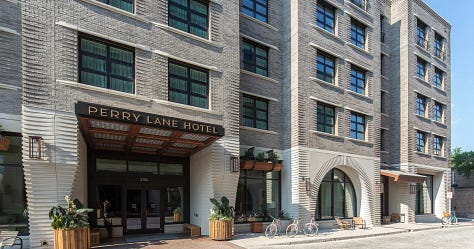
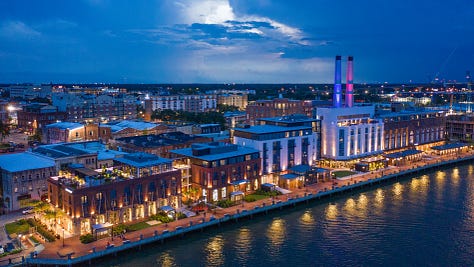
Funny thing is, most of my Savannah friends would complain about how poorly designed a lot of the new construction is. And by the standards of historic buildings, they are often correct. There’s also still a number of lousy new buildings, like most cities. But the design and building culture is still far better than new building virtually anywhere else.
In fact, as a general rule, my depressing observation is that architecture gets worse moving from east to west across the USA. It didn’t used to be that way. We used to produce exceptional buildings all across the country. We had high-quality design virtually everywhere, once a settlement was established. Just drive the country, look at the places we built before 1930, and you’ll see for yourself. But somehow we’ve lost that culture, and only those places with a deeper history have retained some desire for quality design and the skills to do it.
Midwest Nice
Thinking specifically about the Midwest, I wonder, are we too nice? Are we too quick to avoid confrontation (even in the mildest definition of that word)? Are we culturally reluctant to do something that feels like “showing off?”
Are we just too willing to accept “good enough?”
And hey – why is this even a problem, design snob?
Well, first, an emotional response. Humans need beauty. We crave it. Whether it’s beauty in the natural environment, the built environment, or in other people, we seek it out. We desire to surround ourselves with beauty, unless we are psychopaths.
Then there’s the practical response. In beautiful places, people linger more and walk more. Steve Mouzon, itinerant architect and author of The Original Green, calls this “Walk Appeal.” The idea is that all the details matter if we actually want to encourage people to walk instead of drive. And, beauty is of the most important considerations. For those focused on the profit motive, consider that the more people linger, the more likely they are to spend money as well.
I’ll go one further step beyond Steve. Mediocre and unattractive built places eventually turn people off. Really great ones attract people forever, in spite of their other flaws. New Orleans has a lot of flaws as a place. It’s very hot. Crime has always been a problem. It’s not particularly clean. But NOLA will always attract people because it’s so damn beautiful and enjoyable to be there.
Just building new buildings alone doesn’t mean we’ve done something worthy of great praise. I’ve noted previously how I admire people in development and real estate generally. I don’t enjoy throwing shade, since it’s such a risky and difficult business. But we’ve got to do better, and I mean the royal WE. We need to figure out what levers we can pull to create new buildings that are equally as attractive as buildings from previous eras, and will last multiple generations.
We used to do this routinely, and do it really well.
At the small scale, it’s interesting to see what Clay Chapman is doing. He’s found a way to reinvigorate interest in time-tested methods of building masonry buildings, that also happen to be eye-dropping gorgeous. Clay is an evangelist for the method, and trains others to do the same kind of work. But let’s be honest, this is a niche approach. In a world of mass production and consumption, that’s the reality. I think there’s something very compelling about Clay’s work, and the idea of training people to build with traditional methods – not just pastiches of traditional design. I hope it continues to grow in popularity. But I don’t expect it to scale to compete with our current methods of production housing.
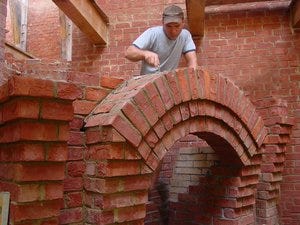
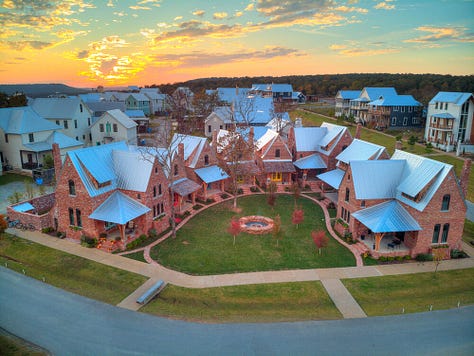

This is The Way
Let me put forth a theory, and a possible way forward.
I believe we have plenty of skilled people in both design and construction. I also do not think there’s anything less sophisticated about the general population in the Midwest as compared to anywhere else. That’s a lovely myth that some people would have you believe, but isn’t true in my experience.
The fault, and the solution, lies with people in the professions. By that I mean design, development, and construction. People that are “my people.”
Nearly all decisions in the built environment start with a developer taking a risk. Developers come up with a concept for a site, try to understand what might work financially, and hire the design professionals. So, with what I say below, I don’t want it to seem like I’m passing the buck. In the end, it’s all about what decisions our developers make.
Knowing that, though, the cult that is architectural education must be addressed. After all, developers can only hire the people who are actually available and professionally licensed.
The Church of Modern Architecture has been a primary source of the degradation of the built environment. Like all cults, it’s utopian and ideological. It casts out sinners. It’s dominated by big personalities. It converts people when they are young, naïve and easily brainwashed.
The cult’s ideas on their face, especially outside the academic cloister, are laughable: the zeitgeist; the casting aside of history before 1918; the notion that everyone is an individual genius, yet ironically everyone must pursue the same aesthetic pushed that week in Dwell magazine.
Here’s something I wrote previously, in a piece titled “Architects: Get Local.”
What architects have done is used the zeitgeist idea to create an intellectual space that makes it impossible for them to truly embrace tradition. The theory goes that the only true value of architecture is to seek out and define this particular moment in time, with materials, methods and designs that are indicative of “now.” Anything other than that approach is simply building, not real architecture. By implication, you are clearly a rube, a no-talent or a mouth-breather if you’re not aspiring to define a time or unique style of your own.
Chefs do not have such a quandary, to their credit. One of the central themes of the foodie movement is that those old traditions, with real ingredients, taste better and are better for us. They emphasize local sourcing of goods, find inspiration from regional and local traditions, and look for creative new approaches based on those local traditions and ingredients. Even if those ingredients and traditions were imported a hundred or two hundred years ago (which they likely were), they are still cherished and meaningful to people today.
You might think I hate everything about “modern” architecture (since modern is now 100 years old, I have to use quote). Au contraire, mon frere. There’s been some great innovations in the last century: the open floor plan, buildings that are more permeable and better connect to the outdoors and new technologies that improve the indoor environment. I’ve even visited and enjoyed many of the great modern masterpieces.
But a lot of it, the majority of it, just plain sucks. It’s made the world uglier, more boring, more uniform and more hostile to human beings. Every place in the world dominated by buildings of the last 100 years is demonstrably inferior for humans to the places that came before them.
So we have to ask, why did this happen and who pushes it? Again, it’s been my folks. The professionals in my world, and a very small segment of the so-called professional class are those that have been desperately pushing crappy design for 100 years. It didn’t bubble up from the masses.
It’s fashionable to criticize the urban planning ideas of those previous generations now (though not so much the architecture), and to call the practitioners racist. As if we can wave a magic wand and dismiss people. And while racist notions were often baked into some of the theories, it’d be ahistorical to just stop there. In fact, what really happens is this: we had very smart professional people with big ideas. They were the smartest people of their eras. Just look at some of the videos, read the books, and admire their intelligence. Here’s one of Kevin Bacon’s father, Ed Bacon.
One of the seriously dumbest things people in our era say or put forth is that we are all obviously smarter and more virtuous people now than previous generations of humans. “We know better now!” It’s an arrogance that makes us feel good, but is completely bonkers.
Once you have a powerful ideological movement, what happens next is the opportunists jump in. They see something compelling that is capturing smart minds, and look for ways to profit off those ideas. That’s the short history of how The Suburban Experiment in American came to be, how Urban Renewal happened, and how modern architecture took over corporate America. All it took was to line up the idealists with the corporate class, and the results for the public don’t really matter.
The public ultimately could only use its voice to slow or stop things, which it did with the historic preservation movement (truly grass roots originally), and the push for community control of planning (also grass roots initially). Those were the only outlets for responding to crappy building environments. Before the modern movement in architecture and planning, we never had society-wide opposition to new building, to growth and to change. Of course those have been co-opted now, but that’s a story for another day.
Taking Ownership
That’s how we got to where we are.
So what do we do now?
There are some glimmers of hope. I’ve seen improvements in a few newer buildings in my city and elsewhere. There’s more and more vocal hand-wringing about how boring most everything new looks, and how poorly it’s built. I think that’s good - we should notice what is being built and demand better.
KC itself is on the cusp of being discovered. We could well be the next boom story, like Nashville or Austin. People are fleeing expensive coastal markets and dysfunctional urban markets, and coming here. We have a “cool” factor now. And that’s not all because of Patrick Mahomes. Maybe 92%, but not all.
I ask myself frequently, “What can I do better?” and “How can I help leave a better legacy for my kids?”
I hope to work in the field for at least a couple decades more. Where I have the ability, I’ll try to push for better design. I’ll try to commission architects that produce really great work, and encourage others to do the same. I’ll keep talking about the importance of good design, from macro to micro.
Ultimately, we need the people who commission designers to put a higher value on great buildings. Very good design, in and of itself, doesn’t cost much more (if any) than lousy design. I know plenty of very highly-paid architects that produce routinely bad buildings. And the corollary - plenty of very talented people who don’t charge a lot. The Urban Guild is one resource of very talented people I’ve known for years, and highly respect. The skill of good design can be learned broadly; it doesn’t take six years of architecture school plus plus.
I hope we can create those 10,000 new developers I’ve written about before, and we can inspire them to value better design. I’m not asking for a suite of new regulations or review processes. Not at all. My experience has largely shown those don’t have the effect communities and planners hope for. Lacking a design culture, it just becomes another bureaucratic box to check and money to spend. Instead, let’s each of us figure out what we can do, and what ownership we can take of our built future.
Michael Stern ultimately showed how the KC Symphony could raise the bar successfully. Similarly, our food scene here in KC, and throughout the Midwest has elevated tremendously over the last few decades. We are starting to have more pride in our region, and ourselves. I believe this to be a great place to live, and to be from. I believe it has fantastic amenities and people. For our built environment, good enough is not good enough. Let’s challenge ourselves to do better.


Amen! Thanks for the charitable, non-ideological, inspirational insights, ideas, and advocacy. Here’s to Savannah’s beauty and Kansas City’s accelerating coolness.
Fantastic as always! Better design comes from, as Roy Williams says, “Want To!”
We need to Want To! The professors of architecture professing the efficiency of the square as good design should be dismissed! It may be efficient, but it is only rarely beautiful…